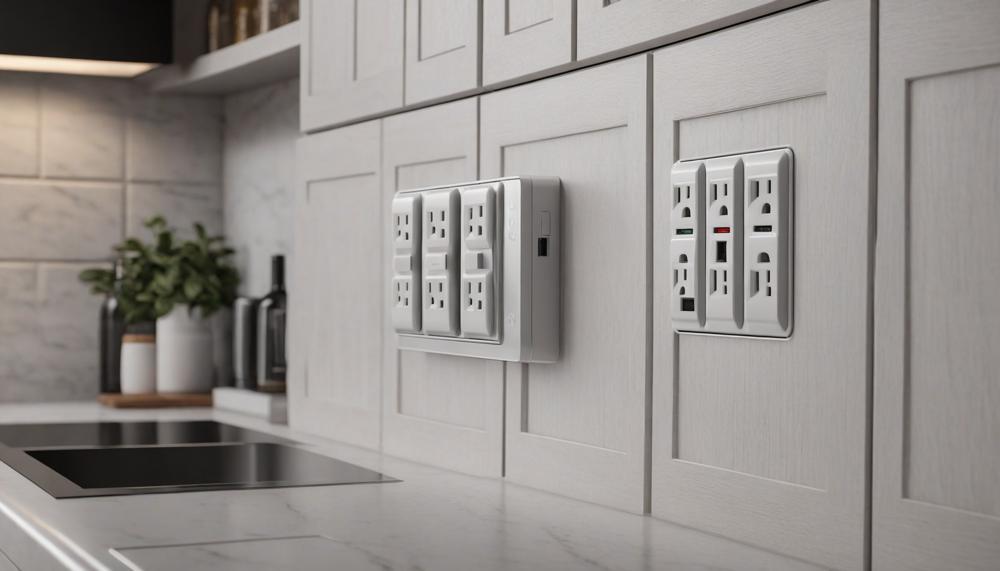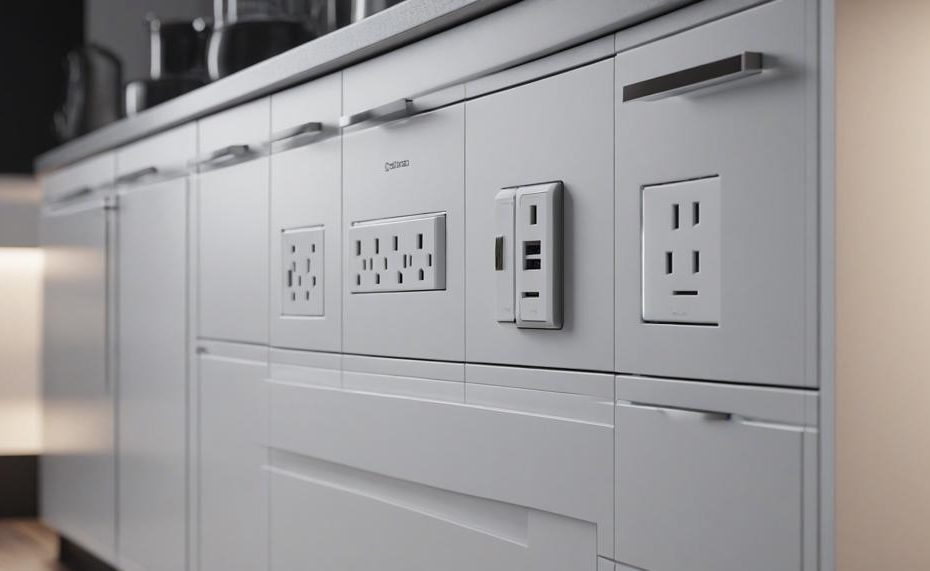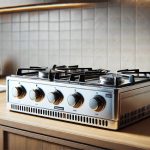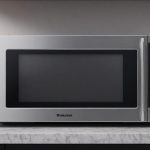You might be wondering how many outlets you can safely install on a 20 amp circuit in your kitchen. The short answer: typically up to ten outlets. However, this number isn’t set in stone and varies based on several factors, including the specific electrical loads your kitchen appliances will place on the circuit.
Understanding this is crucial because it directly impacts the functionality and safety of your kitchen. Overloading a circuit can lead to frequent breaker trips or even potential electrical fires. Here are some key points to keep in mind:
- Circuit Capacity: A 20 amp circuit can handle up to 2,400 watts of power.
- Appliance Load: Different kitchen appliances have varying power needs. Small appliances like toasters and blenders use around 800-1,500 watts, while larger ones like refrigerators can consume up to 2,000 watts or more.
- Code Requirements: Local building codes, including the National Electrical Code (NEC), mandate specific requirements for kitchen outlets to ensure safety.
- Dedicated Circuits: High-draw appliances often require their own dedicated circuits to prevent overloading.
As we delve into the details, you’ll gain a comprehensive understanding of how to effectively and safely plan your kitchen’s electrical layout, ensuring that all your culinary adventures are powered reliably and securely.
Contents
Kitchen Outlets on a 20 Amp Circuit: The 80% Rule

The 80% rule for a 20 amp kitchen circuit is a guideline that ensures safety and efficiency by limiting the electrical load to 80% of the circuit’s capacity. For a 20 amp circuit, this translates to using a maximum of 16 amps (or 1920 watts), leaving a safety margin to prevent overloading and potential fire hazards.
Application of the 80% Rule in Outlet Planning:
| Factor | Details | Implication |
| 20 Amp Circuit Capacity | 20 amps or 2400 watts | Maximum capacity without the 80% rule |
| 80% Rule | 16 amps or 1920 watts | Safe operating load for continuous use |
| Outlet Capacity | 1.5 amps per outlet (approx.) | Each outlet contributes to the total load |
| Number of Outlets | 10-11 outlets | Recommended number of outlets |
Practical Considerations:
- Outlet Count: Typically, 10 to 11 outlets can be safely installed on a 20 amp circuit when applying the 80% rule. This assumes each outlet will draw around 1.5 amps. However, if higher-load appliances are plugged into these outlets, the number should be reduced accordingly.
- Appliance Load: For high-wattage appliances like microwaves or coffee makers, it’s prudent to have dedicated circuits or consider fewer outlets to avoid tripping the breaker.
- Building Codes: Local codes and the National Electrical Code (NEC) require at least two 20 amp circuits for kitchen outlets, primarily for countertop use, which shouldn’t be shared with other rooms or lighting fixtures.
The Number of Kitchen Outlets Can Connect to a 20 Amp Circuit
A 20 amp circuit can safely support up to 11 kitchen outlets. This follows the National Electrical Code’s 80% rule, which advises limiting the load to 16 amps on a 20 amp circuit to avoid overloading and ensure safety.
This limit considers the practical use of kitchen appliances, which can draw significant power. To break it down:
| Appliance/Load | Average Wattage | Amps (at 120V) |
| Toaster | 1200W | 10A |
| Coffee Maker | 800W | 6.67A |
| Blender | 600W | 5A |
| Microwave | 1500W | 12.5A |
| Refrigerator | 800W | 6.67A |
Each outlet can draw a significant amount of power, especially when multiple appliances are used simultaneously. Therefore, adhering to the 80% rule is crucial.
Common Kitchen Appliances and Their Wattage
Understanding the wattage of household appliances is crucial for making conscious energy use choices. Here’s a comprehensive guide to the wattage of some of the most common kitchen appliances, which will help homeowners optimize energy efficiency and manage utilities effectively.
| Appliance | Wattage Range (Watts) | Details |
| Refrigerator | 150-200 | Essential for preserving food, operates continuously with moderate power usage. |
| Microwave | 600-1,200 | Quick heating and cooking, significant power for short durations. |
| Oven | 2,000-5,000 | High power consumption for baking and roasting, usually used intermittently. |
| Dishwasher | 1,200-2,400 | Cleans dishes efficiently, cycles include heating water and drying. |
| Coffee Maker | 800-1,500 | Brews coffee quickly, moderate power usage for short periods. |
| Blender | 300-700 | Used for blending ingredients, operates at high speed for short bursts. |
| Toaster | 800-1,500 | Quickly toasts bread, high power but short operation time. |
| Slow Cooker | 200-300 | Low power usage over long periods, ideal for simmering and slow cooking. |
| Electric Kettle | 1,500-3,000 | Boils water rapidly, high wattage for brief durations. |
| Food Processor | 400-1,200 | Chops, slices, and purees, high-speed operation for short periods. |
These wattage values highlight the power requirements of each appliance, aiding in energy management and preventing circuit overloads. For more detailed information, consider consulting the specific appliance’s manual or manufacturer’s website.
Reducing the Load on Your Kitchen Circuits
To reduce the load on your kitchen circuits and prevent overloading and potential hazards, follow these steps:
| Step | Action | Details |
| 1 | Identify Devices on Each Circuit | Learn which devices are connected to each circuit in your kitchen. |
| 2 | Calculate Safe Load Rating | Determine the safe load rating of each circuit (15-20 amps). |
| 3 | Spot Power-Hungry Appliances | Identify high-powered appliances and avoid using them simultaneously on the same circuit. |
| 4 | Distribute Usage | Spread the use of high-powered appliances across different circuits. |
| 5 | Circuit Mapping | Create a map of your kitchen circuits to plan better usage and identify needs for additional circuits. |
| 6 | Use Energy-Efficient Appliances | Opt for energy-efficient appliances to reduce power consumption. |
| 7 | Regular Maintenance | Ensure regular maintenance of appliances to keep them efficient. |
Conclusion
Balancing the number of outlets on a 20 amp kitchen circuit requires careful planning to ensure safety and functionality. The rule of thumb is to install up to ten outlets, but this can vary based on the power demands of your kitchen appliances. A 20 amp circuit supports up to 2,400 watts, but to avoid overloads and potential hazards, the National Electrical Code recommends using only 80% of this capacity, translating to about 1,920 watts.
This guideline means that each outlet, typically drawing around 1.5 amps, contributes to the overall load. Appliances like toasters, blenders, and microwaves can significantly impact this load, often requiring dedicated circuits to prevent tripping breakers and electrical fires. For instance, high-wattage devices such as microwaves and coffee makers should have their own circuits due to their substantial power consumption.
Understanding and mapping your kitchen’s electrical layout is crucial. Knowing which appliances are on each circuit and distributing high-power devices across multiple circuits can help manage the load effectively. Opting for energy-efficient appliances and performing regular maintenance can further reduce the electrical burden.





